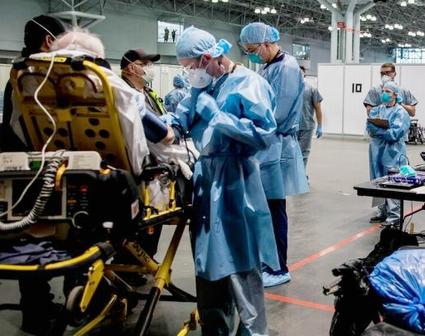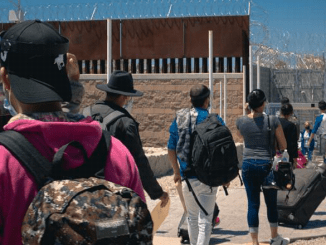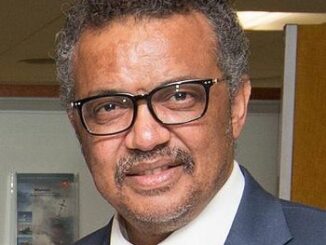
ALBANY, New York, May 4, 2020 (ENS) – Amid the ongoing global COVID-19 pandemic that has hit New York harder than any other state, New York Governor Andrew Cuomo has announced that New York’s contact tracing pilot program, with leadership from former New York Mayor Mike Bloomberg, will begin in the coming weeks.
First in the nation, this tracing program will focus on areas with the highest rates of infection and on regions that the data shows could be the first to open as many states bow to their residents’ impatience and lift stay-at-home orders even as the number of COVID-19 cases and deaths continues to rise.
New York State’s contact tracing program will operate through the next flu season, and it will be implemented in coordination with tri-state neighbors New Jersey and Connecticut.
The program will include a baseline of 30 contact tracers for every 100,000 individuals and will utilize additional tracers based on the projected number of cases in each region.

The program is expected to employ between 6,400 and 17,000 tracers statewide in New York depending on the projected number of cases.
Contact tracing teams will work remotely with state-of-the-art software to develop a secure database of information on the spread of the infection.
This type of effort is exactly what the U.S. Centers for Disease Control and Prevention, CDC, advises all governments to do to help control COVID-19, the disease caused by the novel coronavirus that emerged in Wuhan, China last December.
“Contact tracing, a core disease control measure employed by local and state health department personnel for decades, is a key strategy for preventing further spread of COVID-19,” the CDC explains.
“Immediate action is needed,” the agency warns. Communities must scale up and train a large contact tracer workforce and work collaboratively across public and private agencies to stop the transmission of COVID-19.”
To meet the scale and scope of this program, Mayor Bloomberg and the Johns Hopkins Bloomberg School of Public Health will support the New York State Department of Health’s initiative to build an army of contact tracers through a three-step process: recruitment, interviewing and training.
Bloomberg Philanthropies will help the New York Department of Health, DOH, to identify and recruit potential contact tracers for the program from state, city, and county health departments.
As part of this effort, The Bloomberg School, the top-rated public health school in the country, in consultation with DOH, will develop a world-class online curriculum for the state’s contact tracers that includes a training program and an online exam that must be passed to complete the program.
Vital Strategies’ initiative Resolve to Save Lives will provide technical and operational advice to New York State Health Department staff.
Governor Cuomo says contact tracing will help prevent the spread of COVID-19 with four key steps.
First, labs will report positive cases of COVID-19 immediately to contact tracers on a daily basis.
Next, the contact tracer will then interview the positive patient to identify people they may have been in contact with over the past 14 days.

The contact tracer will then notify and interview each of the positive patient’s contacts to alert them to their risk of infection and instruct those contacts to quarantine or isolate for 14 days to ensure they don’t spread COVID-19 to others.
Finally, the contact tracer will monitor those contacts by text throughout the duration of their quarantine or isolation to see if the contacts are showing any symptoms.
“We know increasing our testing capacity is the key to re-opening New York, and the second step after testing is tracing to find out who tested positive, who they contacted and then isolate those people so you don’t increase the rate of infection,” Governor Cuomo said.
“Tracing is not hard on an individual basis – the problem is the massive scale and with an operation that has never existed before,” said the governor. “We need our contact tracing program to come up to scale to meet what we’re doing with testing as soon as possible, and we are working with Mike Bloomberg now to build an army of tracers to meet the state’s demand so we can begin this operation immediately.”
“One of the most important steps to take to re-open the economy as safely as possible is to create a system of contact tracing. When social distancing is relaxed, contact tracing is our best hope for isolating the virus when it appears – and keeping it isolated,” said Michael Bloomberg, founder of Bloomberg Philanthropies and Bloomberg LP, and three-term mayor of New York City (2003-2013).
“Governor Cuomo recognized that, and since Bloomberg Philanthropies has deep experience and expertise in public health, we are glad to support the state in developing and implementing a contact tracing program,” Bloomberg said. “We will share what we learn publicly, so cities and states around the country can build on our efforts, and so can nations around the world.”
Copyright Environment News Service (ENS) 2020. All rights reserved.
© 2020, Environment News Service. All rights reserved. Content may be quoted only with proper attribution and a direct link to the original article. Full reproduction is prohibited.



